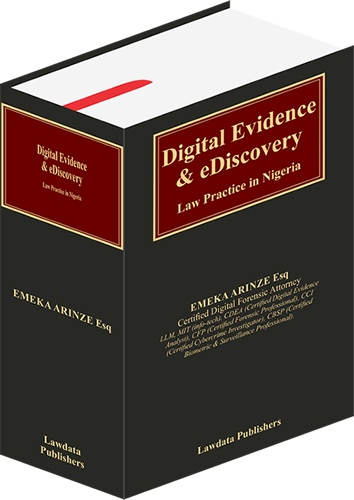The Book
Digital Evidence & eDiscovery Law Practice in Nigeria

Chapter 18
Evaluation of Section 84 of Nigeria Evidence Act 2011 and A Critique of the Supreme Court Decisions in Kubor v. Dickson and Kubor v. Sylva
The rapid growth in the number of criminal cases involving electronic evidence has all‐too‐often found law enforcement and the judiciary ill-equipped to deal with the new issues created by this nature of evidence. In this current dispensation, there is no gain-saying that more and more information generated, communicated and stored by electronic means intend to have legal consequences that cannot be ignored. Therefore, if the legal consequences were to be properly adjudicated, the information must be capable of being put before the adjudicators. The gathering, conservation, communication and presentation of the computer‐derived evidence as illustrated in the preceding chapters must, therefore, fulfil legal requirements with regard to the admissibility of the evidence. Responding to these concerns, the Nigeria legislature in 2011, by way of amendment to the Evidence Act, introduced new provisions amongst which is section 84 to cater for the weight and admissibility of ‘output’ produced by a computer as evidence in both criminal and civil proceedings. Chapter 18 provides detailed evaluation of section 84 of the Evidence Act, 2011.
